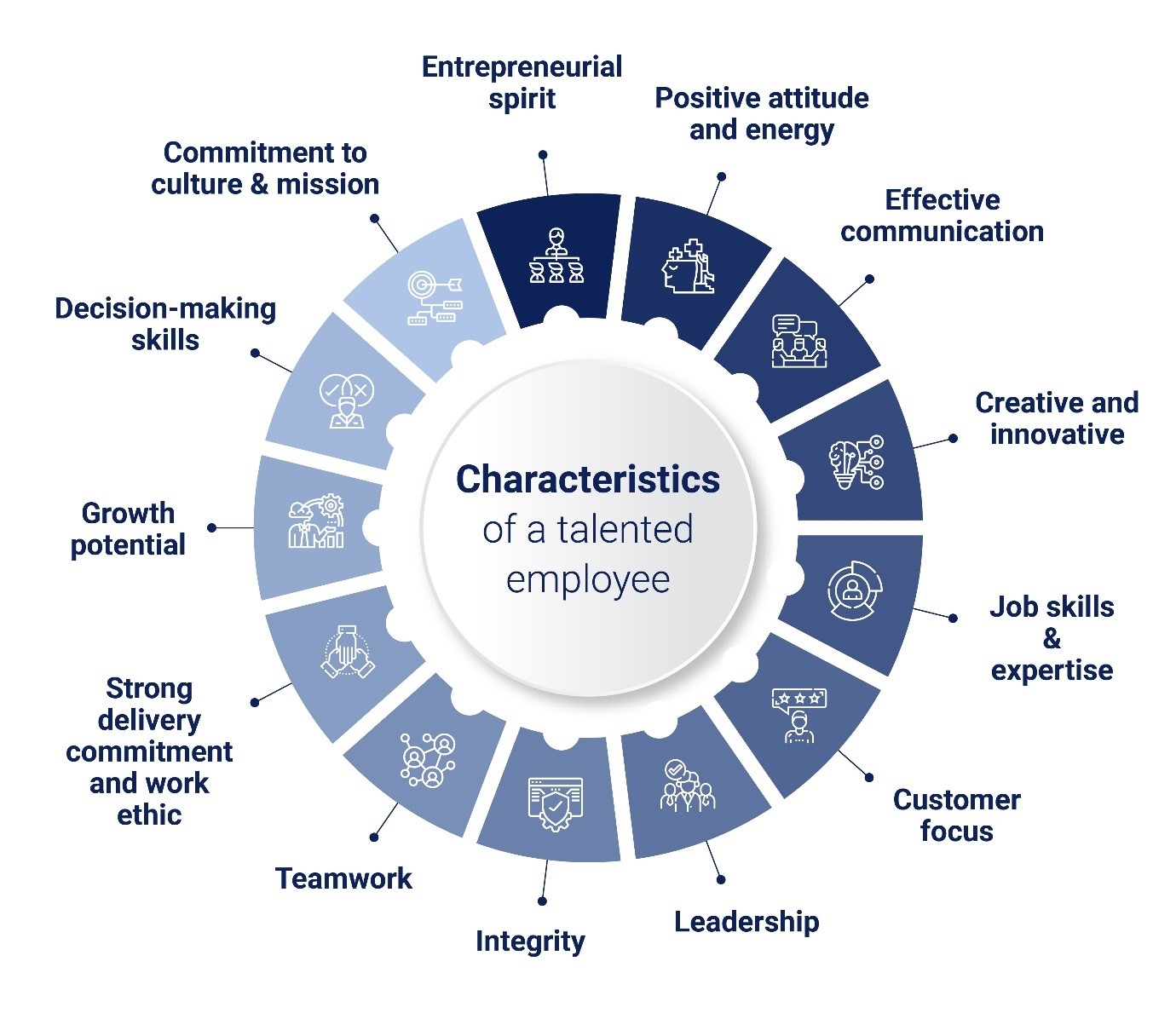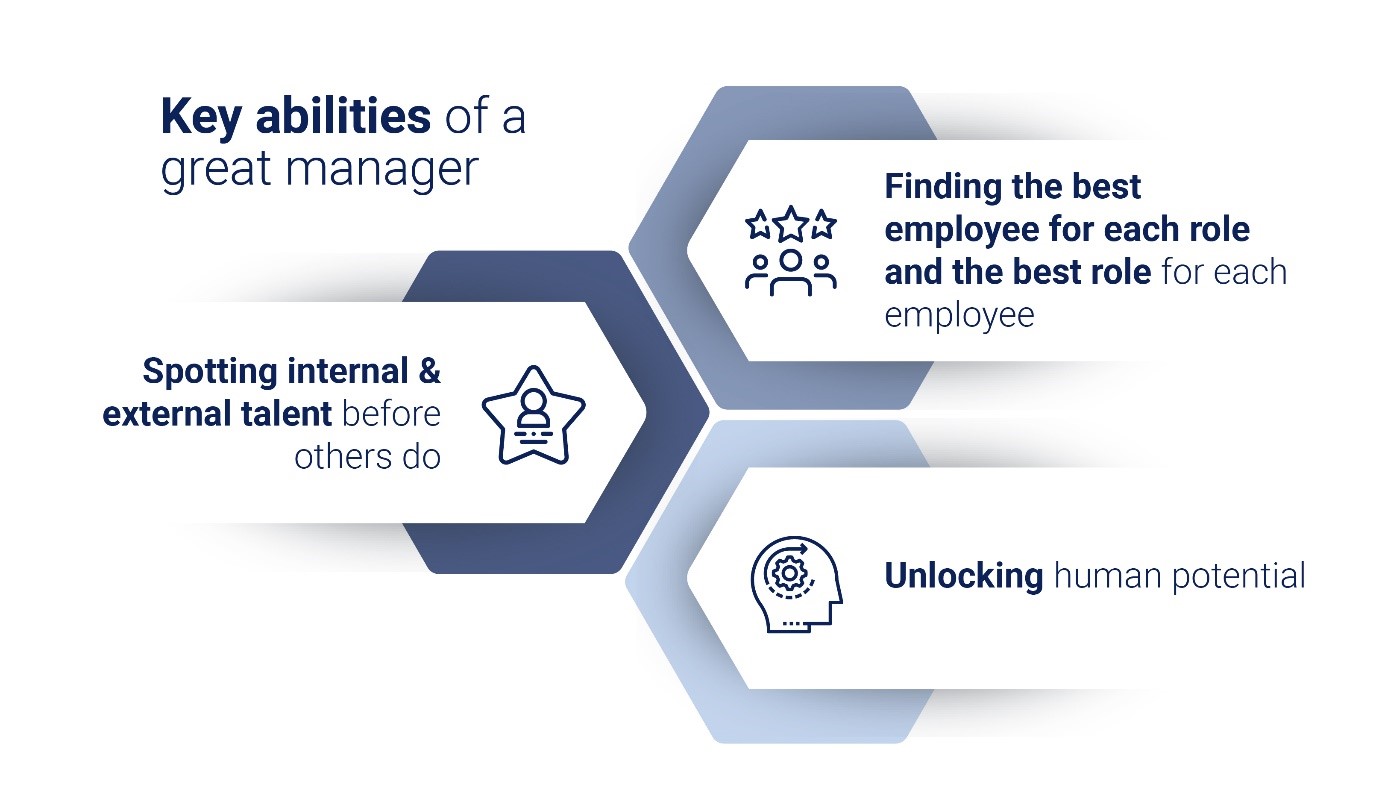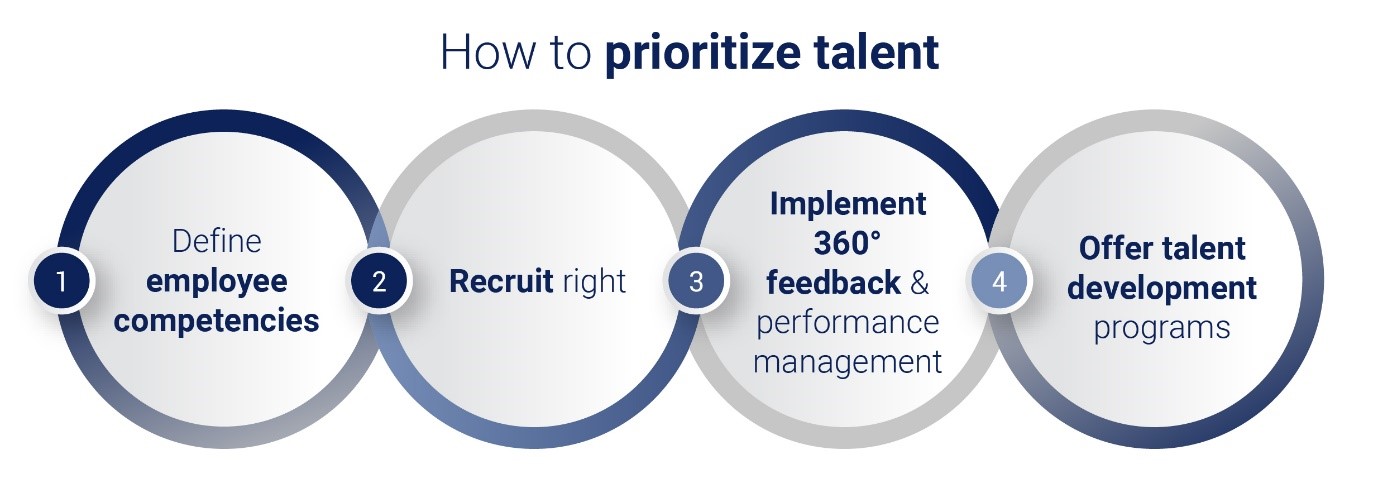
When it comes to managing the workforce of an organization, identifying the top talents is among the key responsibilities of the talent management team. This is not about just pinpointing the ones who have the highest performance ratings, but should in fact go beyond this simple measure to encompass those who:
Clearly, developing talent in the workplace is about more than just job performance. Long-term success in projects and attainment of business goals requires identifying success-critical traits for the organization, and these traits differ for each organization and within them, for each department. Hence, when it comes to how to find talent, it becomes imperative to see who consistently delivers results and demonstrates the requisite characteristics.

At every level of a team, leadership must be deeply embedded. It allows staff members to excel in their roles, and the additional responsibilities make them feel empowered, which in turn makes their work all the more rewarding.
When looking to build talent, effective recruitment is a must. It brings abundant talent into the workforce, which must be carefully sifted and nurtured. Their ambitions could differ, but the right efforts at developing talent with the requisite support will help workforce members transform into leadership roles with time.
Talent has often been sought in the wrong places, or with undue emphasis on a culture fit. This often reduces diversity in composition and thinking, ultimately dragging down creativity and innovation. There may be no one right answer to ‘how to find a talent’, but the approaches of the past can definitely be bettered.
In the search for talent, what sets a great manager apart is a desire to lead the effort, expertise in the field, and a history of strong performance. The oft-missed skill, though, is talent management – a great manager must know how to develop talent. It is important not just to measure employee performance basis identified behaviors or characteristics, but also to develop a plan to manage employee talents.

An improved HR strategy is key to enabling an effective talent manager and a well-aligned process of managing talent. Here are the key considerations:

In simple terms, talent development seeks to capitalize on the abilities and strengths of employees with the aim of making them stronger candidates for growth within the company. It encompasses:
Is it important? Yes! Given how employees are spending more time at work than before, it is imperative for them to be made aware of how their work is making a difference. When they can learn and grow in their areas of interest, they become happier and more productive, and thus more likely to stick around.
Ambitions among different staff members tend to vary, but there are always individuals who could grow into managerial roles with the right development and support. Consider these numbers:
Talented staff members are always in high demand, and giving them opportunities to develop their careers is intrinsic to retaining them within the fold. Conversely, failing in this endeavor makes it more likely that they will fly the coop. Developing talent in the workplace thus is critical, and must be deliberate, planned properly, and executed smoothly.
Here are the top considerations for developing good talents:

Developing talent successfully does not rest solely on the shoulders of the talent manager. Several factors must come together to make this work. Below is a list of the key ingredients:
Identifying and developing talent at an organization is no cakewalk. Talent managers must develop future-forward strategies that play the long game without ignoring short-term goals. The right traits are essential for success, and these can often be found within the company folds. Challenge traditional norms with people who do not perpetuate the status quo. And rely on data – it is the best barometer of progress, and points not to get it right but to not get it wrong. A great manager must thus know not just the science but also how to put it in practice!

CredBadge™ is a proprietary, secure, digital badging platform that provides for seamless authentication and verification of credentials across digital media worldwide.
CredBadge™ powered credentials ensure that professionals can showcase and verify their qualifications and credentials across all digital platforms, and at any time, across the planet.

Please enter the License Number/Unique Credential Code of the certificant. Results will be displayed if the person holds an active credential from TMI.